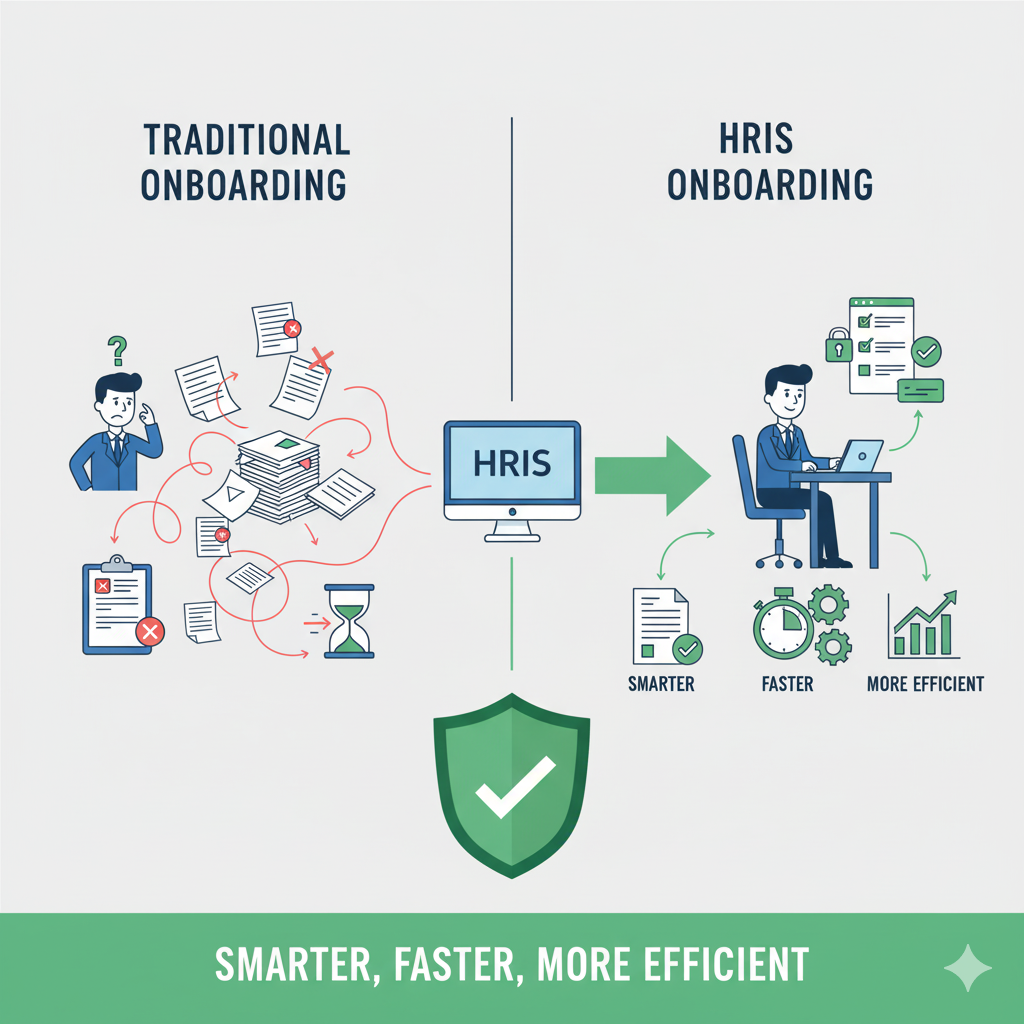Address
Kaypian, San Jose Del Monte City, Bulacan Philippines
Work Hours
Monday to Friday: 8AM - 6PM
Weekend: 10AM - 5PM
Address
Kaypian, San Jose Del Monte City, Bulacan Philippines
Work Hours
Monday to Friday: 8AM - 6PM
Weekend: 10AM - 5PM


Integrated HR. Accurate Payroll.


Integrated HR. Accurate Payroll.

The first few days of an employee’s journey can define their long-term success in your organization. A well-structured onboarding process helps new hires feel welcomed, informed, and ready to perform.
However, traditional onboarding methods—paper forms, manual data entry, and scattered communication—are time-consuming and prone to errors. That’s where HRIS employee onboarding steps in.
By leveraging a Human Resource Information System (HRIS), companies can automate, centralize, and optimize the onboarding process—making it smarter, faster, and more efficient than ever before.
HRIS (Human Resource Information System) is an all-in-one software that manages HR processes such as recruitment, payroll, attendance, and employee data.
When applied to onboarding, HRIS streamlines every step of bringing a new employee into the company—from sending offer letters to completing compliance documents and assigning training modules.
Instead of juggling spreadsheets and paperwork, HR teams can use HRIS to:
This digital transformation not only saves time but also enhances the new hire experience.
a. Centralized Employee Data
HRIS consolidates all employee records—personal info, job details, contracts, and tax forms—into one secure platform. This eliminates duplication and improves data accuracy.
b. Automation of Manual Tasks
From sending welcome emails to scheduling orientation sessions, automation handles repetitive tasks so HR can focus on people—not paperwork.
c. Integration with Other HR Modules
HRIS seamlessly connects with payroll, attendance, and performance systems, ensuring that onboarding data flows smoothly throughout the employee lifecycle.
d. Real-Time Tracking
Managers and HR professionals can monitor onboarding progress in real time, identifying bottlenecks and ensuring timely completion of all requirements.
a. Paperless Onboarding
Gone are the days of printing and filing. Digital forms and e-signatures speed up document collection and reduce administrative overhead.
b. Self-Service Access
New employees can complete onboarding tasks online—reviewing policies, uploading documents, and signing contracts from any device.
c. Reduced Errors and Delays
Automated data entry reduces the risk of human error, while built-in validation ensures compliance and accuracy.
d. Better Collaboration Between Teams
HR, IT, and department heads can collaborate within the same system, ensuring that new hires get the tools and access they need from day one.
| Benefit | Description |
| Efficiency | Automates repetitive tasks and reduces onboarding time |
| Accuracy | Minimizes data entry errors and ensures compliance |
| Engagement | Provides a smooth and welcoming experience for new hires |
| Transparency | Allows HR and managers to track onboarding progress |
| Scalability | Supports consistent onboarding as your organization grows |
Step 1: Evaluate Your Onboarding Needs
Identify pain points in your current process—manual data entry, delays, miscommunication—and set clear goals for automation.
Step 2: Choose the Right HRIS
Look for HRIS software with features like workflow automation, e-signature integration, onboarding templates, and employee self-service portals.
Step 3: Customize the Workflow
Set up automated onboarding checklists tailored to different job roles and departments.
Step 4: Train HR Staff and Managers
Ensure your HR team knows how to use the system effectively for assigning tasks, tracking progress, and managing new hire data.
Step 5: Monitor and Optimize
Regularly review onboarding analytics to identify areas for improvement and enhance efficiency over time.
A great onboarding experience sets the tone for an employee’s journey. With HRIS:
This level of organization and transparency fosters trust, engagement, and long-term retention.
HRIS employee onboarding is no longer a luxury—it’s a necessity for organizations aiming to stay competitive in a digital-first world.
By automating and centralizing the onboarding process, businesses can save time, reduce errors, and create a seamless experience that benefits both HR teams and employees.
Smarter, faster, and more efficient onboarding starts with HRIS—because a great first impression leads to lasting success.